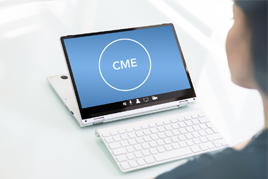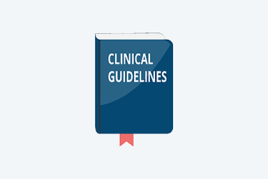Board-certified dermatologist shares 6 tips in time for summer
ROSEMONT, Ill. (July 17, 2024) — Hyperhidrosis, or excessive sweating, is a common medical condition that affects an estimated 15.8 million people in the U.S. It is normal to sweat when you overheat, or your nerves get the best of you. However, if you find yourself sweating profusely even without engaging in physical activity or exposure to high temperatures, you may have hyperhidrosis.
“Excessive sweating can have a significant impact on a person’s quality of life,” said Shoshana Marmon, MD, PhD, FAAD, clinical assistant professor of dermatology at New York Medical College. “Not only is there a physical toll, from sweating through clothing to visible beads of sweat on the body, but there is often an emotional component due to social discomfort or self-consciousness associated with the condition.”
Sweating is a natural, necessary process the body experiences when it needs to cool down. However, those with excessive sweating continue to sweat, even when cooling is not required. While the rest of a person’s body remains dry, one or two areas may drip with sweat, with the most common spots being their palms, feet, underarms, or the head.
Signs and symptoms of hyperhidrosis include visible sweating, skin that turns soft, white, and peels in certain areas, and skin infections, such as jock itch or athlete’s foot. Another common sign is sweating that interferes with everyday activities, such as sweat from underarms soaking through clothes, causing obvious sweat marks, or hands becoming so sweaty that it is difficult to turn a doorknob or use a computer.
Some people are more likely to experience hyperhidrosis, especially individuals that have one of the following:
A family member who sweats excessively
A medical condition that causes sweating
A medicine or food supplement they take which results in excessive sweating
To help manage your excessive sweating, Dr. Marmon and the AAD recommend following these tips to get relief:
Use antiperspirant instead of just deodorant. Antiperspirant helps reduce sweating by plugging your sweat glands when you start to sweat, while deodorant only masks or stops body odor. You may need to apply it at bedtime to dry skin, then again in the morning. (Tip: apply anywhere on your body that sweats, including your palms, back, and behind your knees.)
Keep a sweat journal to find what triggers your sweating. Write down when your sweating occurs, then try to avoid those situations. Some triggers include heat, feeling anxious, and some foods or drinks, like spicy options or caffeine.
Wear breathable fabrics like cotton to help feel more comfortable. Carry a spare set of clothes so you can change into something dry if needed. You can also try wearing armpit shields, which help protect your clothing from sweat.
For sweaty feet, change your footwear often and slip your shoes off when you can to prevent odor, irritation, and skin infections, such as athlete’s foot.
Choose sandals or shoes made of natural materials that help air circulate, like leather.
Wear socks made of cotton or fabrics that wick moisture away from your skin.
Avoid wearing the same shoes two days in a row, so they can dry before you wear them again.
Drink plenty of water, as sweating can make you dehydrated.
Take care of your mental health. If your sweating makes you feel anxious or depressed, getting counseling, joining a support group, and learning more about hyperhidrosis can help.
“Although there is no cure for hyperhidrosis, treatments can significantly help to manage symptoms” said Dr. Marmon. “If your sweating persists without relief, partner with a board-certified dermatologist to develop a customized treatment plan that is right for you.”
These tips are demonstrated in “How to control excessive sweating: Dermatologist tips,” a video posted to the AAD website and YouTube channel. This video is part of the AAD’s “Your Dermatologist Knows” series, which offers tips people can use to properly care for their skin, hair, and nails.
To find a board-certified dermatologist in your area, visit aad.org/findaderm.
# # #
Contact
Shelby Homiston, shomiston@aad.org
Rhys Saunders, rsaunders@aad.org
Media Relations, mediarelations@aad.org
More Information
Hyperhidrosis: Tips for managing
Hyperhidrosis: Diagnosis and treatment
AAD B-Roll Library
About the AAD
Headquartered in Rosemont, Ill., the American Academy of Dermatology, founded in 1938, is the largest, most influential and most representative of all dermatologic associations. With a membership of more than 21,000 physicians worldwide, the AAD is committed to advancing the diagnosis and medical, surgical, and cosmetic treatment of the skin, hair, and nails; advocating high standards in clinical practice, education and research in dermatology; and supporting and enhancing patient care because skin, hair, and nail conditions can have a serious impact on your health and well-being. For more information, contact the AAD at (888) 462-DERM (3376) or aad.org. Follow @AADskin on Facebook, TikTok, Pinterest and YouTube and @AADskin1 on Instagram.
Editor’s note: The AAD does not promote or endorse any products or services. This content is intended as editorial content and should not be embedded with any paid, sponsored or advertorial content as it could be perceived as an AAD endorsement.
 Find a Dermatologist
Find a Dermatologist
 Member directory
Member directory
 AAD Learning Center
AAD Learning Center
 2026 AAD Annual Meeting
2026 AAD Annual Meeting
 Need coding help?
Need coding help?
 Reduce burdens
Reduce burdens
 Clinical guidelines
Clinical guidelines
 Why use AAD measures?
Why use AAD measures?
 Latest news
Latest news
 New insights
New insights
 Physician wellness
Physician wellness
 Joining or selling a practice?
Joining or selling a practice?
 Promote the specialty
Promote the specialty
 Advocacy priorities
Advocacy priorities
